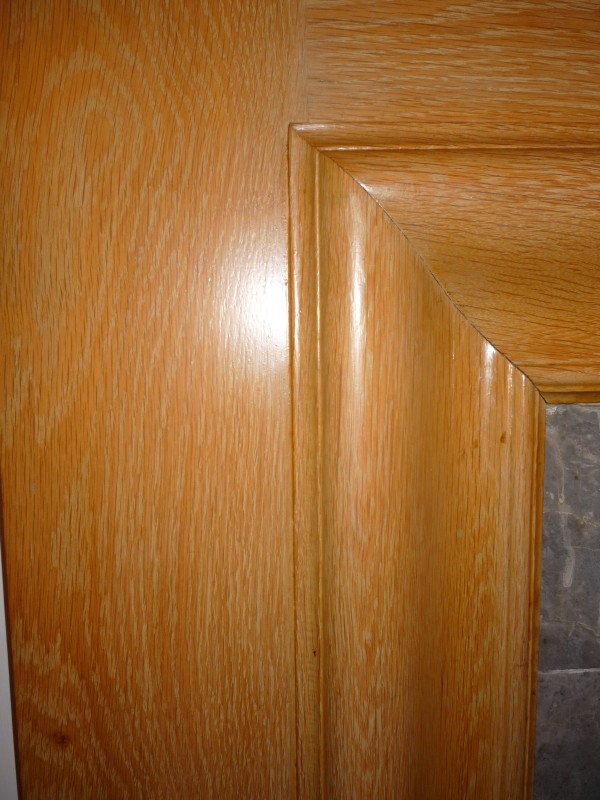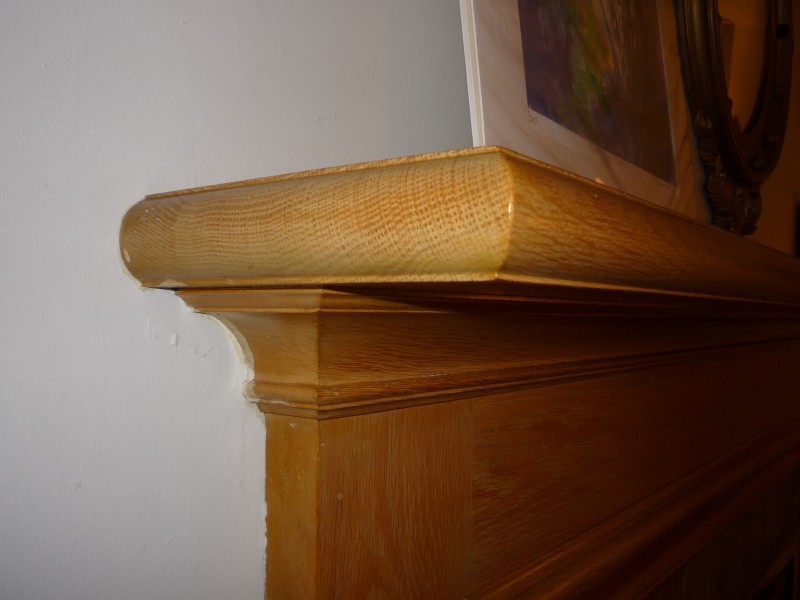Question
I'm building a TV cabinet that will be next to the mantle shown in the picture. The client wants the finish to match reasonably close, but isn't looking for perfection (phew!). The mantle is finished the same as all the trim in the room, and dates to the mid-50s when the house was built, and is either red or white oak (any opinions on that?). The pigment in the pores has a slightly greenish cast to it, and some pigment is visible on the surface. The finish is brushed and almost fills the grain. This is in a modest suburban home, so I doubt they did anything special to achieve the look, and wonder if this was a common technique then.
I usually shoot ML Campbell CV or pre-cat lacquer, and would like to do the same here, but I'm not sure if I need to fill the grain before I seal it to allow some pigment to color the surface, or to use a separate grain filler and glazing step before top coating.


Forum Responses
(Finishing Forum)
From contributor B:
In the late 80's I worked at a place that did lots of this look. Schedule was seal first, then a spray mix of white paint to 3 gallons of naphtha. Think it was a pint of paint, but could have been a quart. Waited 15 minutes, then hand wiped surface with clean rags. This removed 80% of the paint solution. If you look at your pics, you'll notice that low spots in concave areas and high spots in convex areas have no/little white. That's because they were easy areas to remove paint.
We'd let dry for 4 hours, then hand sand with 400 grit. Then it was 2 coats of topcoat. As for the greenish tint, I know exactly what you mean. It was never there when stuff left the shop, but a year later we could always see it. We just figured it was a combo of solvent yellowing and oak tannins.
